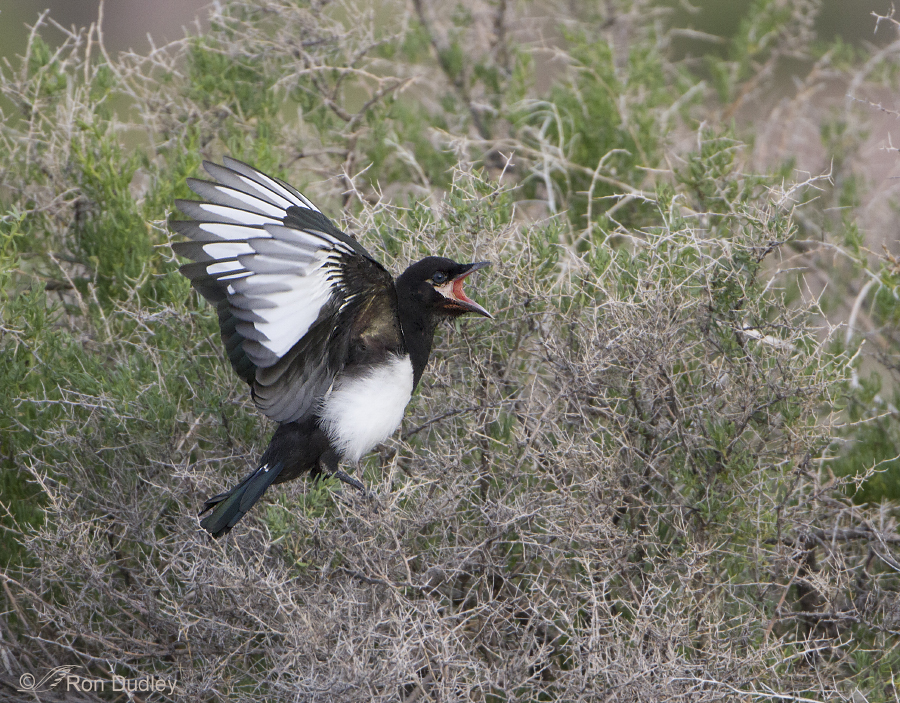Antelope Island always has an interesting mix of birds for the photographer and birder. During the winter months raptors are one of the primary attractions for me but soon after the cold months are over they begin to thin out and the migrating spring birds begin to appear. The last several weeks have been in transition with fewer raptors but many migrating species are beginning to show up – in addition to the many year-round residents on the island. With this post I thought I’d present a few shots from the past week or so as a small representation of some of the common birds right now. 1/2500, f/6.3, ISO 500, 500 f/4, 1.4 tc Black-billed Magpies are year-round residents of the island and they’re in a nesting frenzy right now which allows for some interesting opportunities for the photographer. This bird is landing on a bush very near its nest. 1/1250, f/7.1, ISO 500, 500 f/4 Springtime is my favorite season to photograph Chukars because they’re all dolled out in fresh plumage and they’re very approachable when they’re calling from rocks. For much of the rest of the year they spend their time scurrying around in the vegetation and it’s quite difficult to get a clean shot. This one was calling with a lot of enthusiasm! 1/3200, f/5.6, ISO 500, 500 f/4, 1.4 tc Some of the Loggerhead Shrikes also remain on the island year-round but their numbers increase noticeably in spring. 1/1000, f/6.3, ISO 640, 500 f/4, 1.4 tc It’s always a treat when the Long-billed Curlews return to…
Continue reading


